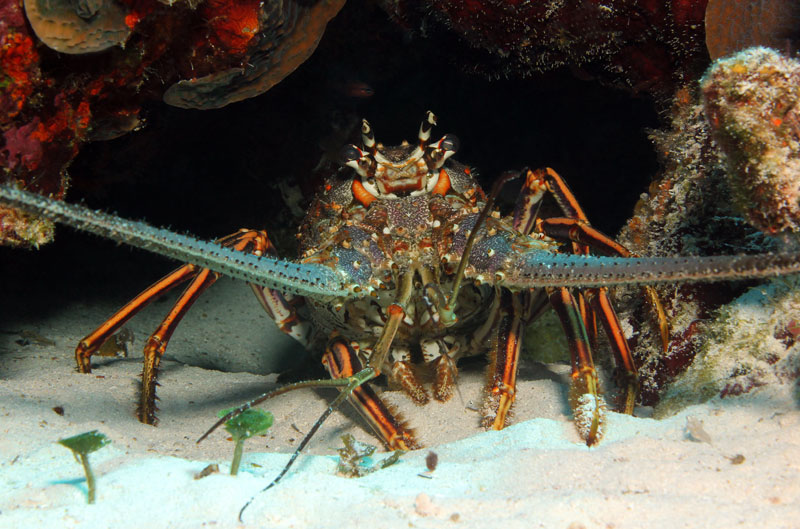Fishing and diving for lobster is dangerous business, and it’s even riskier outside the U.S. where safety often takes a back seat to productivity. Such is the case in Honduras, where 11 divers died and 48 became disabled in the last two lobster fishing seasons alone. As a result, five large food importers in the U.S. are choosing to do something about it.
The companies, Chicken of the Sea, Netuno USA Inc., Harbor Seafood, Inter-American Trading Product and Red Lobster, have claimed that the use of scuba divers to catch lobster is detrimental to fishermen due to the high incidence of dives performed, Honduran newspaper El Heraldo reports. They will no longer import lobster collected by divers in Honduras as a result. The Inter-American Commission on Human Rights is also stepping in, filing a suit against Honduras.
“We will not have the spiny lobster as a resource that has had contact with fishermen who have used the scuba diving technique,” executives of the U.S. firms pointed out. “We will be implementing testing to verify that our spiny lobster does not come from these fishermen,” they added.
According to the data provided by the Central Bank of Honduras (BCH), the value of lobsters exported in 2012 was $44.3 million. In 2013 the figure dropped to $42.2 million, and in 2014, to $38.1 million. The Ministry of Agriculture recognizes the lobster catch by scuba diving should be banned as soon as possible in compliance with a regional agreement and because the market for Honduran lobster is getting smaller and smaller.
The lobster fleet operating in the Caribbean is composed of 137 fishing boats, of which 92 use pots and 45 capture the crustacean by scuba diving.
Over the years, literally thousands of men have become permanently disabled diving in the poorly regulated lobster industry in Honduras. They reach depths of up to 120 feet; rarely with pressure gauges to warn them when their supply is running low. They often quickly swim to the surface when they’re running out of air, which can result in severe decompression sickness and in some cases, paralysis. They also dive as many as 16 times a day, and sometimes ignore their difficulty breathing to attempt to catch one more lobster.
The money they make each day depends on how many lobster they catch, and they’re paid by the pound. The more lobsters they can get on every one of those dives, the more money they make. During a two-week fishing trip at sea, they make as many as 12 to 16 dives a day for a catch that earns them about $3 a pound. On a productive trip they may catch as much as 100 pounds of lobster, but then must pay back expenses that total about 40 percent. The successful ones will end up with a few hundred dollars a month.
About 90 percent of their catch ends up in the United States, according to the Honduran government.
Above: Dangers of the Deep: My Village, My Lobster.
In Nicaragua, commercial diving for lobster has lead to the death of hundreds of indigenous Miskito Indian divers while thousands have become paralyzed from decompression sickness, a diving-related condition known as “the bends.” Earth Focus profiles “My Village, My Lobster”, which tells their story.

